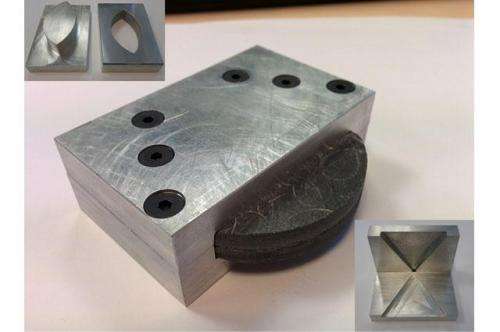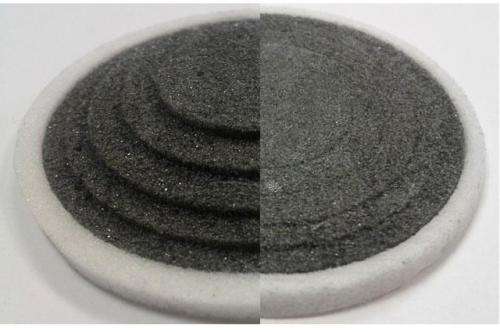Modification of structural composite materials to create tailored lenses

Work in France is exploring cheap and simple modification of structural composite materials to create tailored lenses for near-field focussing of 60 GHz signals.
Field of interest
The main use of near-field focusing antennas is to focus radiated energy radiated on a specified point or surface, often at very close range. This is needed for a range of applications including characterisation of materials, antenna array feeds and biomedical devices, for example, to focus energy on a specific area to kill cancerous cells. The development of millimetre-wave applications and the desire to reduce the size of devices in already densely populated environments has also created interest in near-field focusing for point-to-point communications.
A limitation of existing near-field focusing antennas is that they focus the field in two planes but, for some applications, it is useful to be able to focus the beam along one plane whilst maintaining a broad beam in the orthogonal plane. The antenna presented by the team from IETR, University of Rennes 1, demonstrates this single plane focusing characteristic, and does so using simple design and fabrication techniques. The material they have used to achieve this, however, is more often used to create structures in yacht-building.

Focus under pressure
In their Letter the Rennes team present the design of a lensed antenna and describe the process by which they tuned the dielectric constant of an off-the-shelf construction material to make the lens.
"At the beginning, we were working on inhomogeneous lenses such as Luneburg and Maxwell Fish-Eye lenses. We made several from different foam materials and another made of Teflon with holes drilled in it. Results were good but we were looking for something new because of the high cost of the foam lenses and the difficulties of realising the Teflon lens. The idea came to try other foam materials. We first tried a PVC foam already used in our lab but we had trouble with its mechanical properties. That is why we searched for other kinds of materials and finally found this Airex foam. It is glass fibre reinforced and is mainly used in the construction field for its mechanical properties" explained team member Jonathan Bor.
In order to 'tune' the dielectric constant of the foam material they mechanically press it to force air out, increasing the material's density and, thereby, its dielectric constant. The sectorial horn presented in this work required a lens with a specific dielectric constant and a particular shape to change the phases of the signal to focus it in one plane.
In the Rennes team's method the required shape of a lens for a desired near-field focusing effect is calculated by analogy with optics. In this way lenses can be easily designed for desired focal distances, horn dimensions or dielectric constants. The mechanical properties of the foam make it simple to produce the required shape and using the pressing technique the dielectric constant of the lens is raised as required.
Focal range
The techniques can also be used to create lenses with a graded dielectric constant. In previously reported work the team used the same techniques to design and make a gradient index lens. "Because of the permittivity range that can be achieved, we chose to design a Luneburg lens. This lens has a refractive index which must follow a specific law such that the dielectric constant must range from 2, in the heart of the lens, to 1, at the edge. We produced it with 6 regions, each with a specific permittivity to follow the law as well as possible. The lens focused the field in one plane. Measurement results were good and a loss efficiency of 60-65% was achieved in the 57-65GHz bandwidth." Said Bor.
"In theory, we think that almost every application which requires control of the phase could use this process. Of course, several barriers still exist. Firstly, the range of permittivity that can be achieved is limited. We are not able to have a wide range although we can choose this range depending on the foam material used. Secondly, losses inside the material are a problem and will impact the efficiency of the structure. Lastly, the frequency must not be too high – a limitation imposed by the ability to machine the material."
More information: '60 GHz foam-based antenna for near-field focusing': digital-library.theiet.org/con … 10.1049/el.2014.1108
Provided by Institution of Engineering and Technology
This story is published courtesy of Electronics Letters. For additional Electronics Letters news and features visit theiet.org/eletters



















